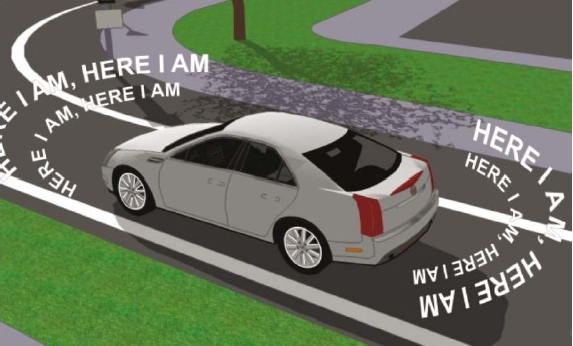Whitepaper introduces U.S. DOT’s IntelliDrive vision
Last updated Jul 26, 2010 — 180 views A whitepaper published by the U.S. DOT (Department of Transportation) provides a quick introduction to the DOT’s new IntelliDrive initiative. The program, which comprises a major portion of DOT’s current five-year ITS (intelligent transportation systems) Strategic Research Plan, aims to enhance safety, mobility, and environmental factors via wireless connectivity among ground vehicles, infrastructure, and passengers’ devices.
A whitepaper published by the U.S. DOT (Department of Transportation) provides a quick introduction to the DOT’s new IntelliDrive initiative. The program, which comprises a major portion of DOT’s current five-year ITS (intelligent transportation systems) Strategic Research Plan, aims to enhance safety, mobility, and environmental factors via wireless connectivity among ground vehicles, infrastructure, and passengers’ devices.
| Note: Subsequent to the initial publication of this article, the US-DOT ceased using the name “Intellidrive” for its Connected Vehicle Research program |
In addition to summarizing the IntelliDrive initiative’s vision, objectives, applications, and core technologies, the whitepaper explains how and why IntelliDrive evolved from DOT’s prior “Vehicle-Infrastructure-Integration” program, dubbed “VII” for short.
As originally conceived, the VII program was built on the assumption that V2V [vehicle-to-vehicle wireless] would be the primary enabling technology to address many of the major vehicle safety issues, the whitepaper notes.
For V2V to bring about “dramatic safety gains,” however, virtually all vehicles (cars, trucks, buses) would need to be equipped with radio devices that providing the requisite V2V communications capabilities. Unfortunately, this meant a delay of 15 to 20 years before a sufficient number of vehicles would be equipped with the technology required to yield tangible benefits.
To circumvent this delay, the program devised an alternative architecture, based on a near-term shift in communications focus from V2V to V2I (vehicle-to-infrastructure) wireless technology. In addition to speeding up results, the use of V2I could also “address safety issues that V2V could not,” the whitepaper suggests.
Having determined that the VII program’s concepts were technically sound and feasible, the DOT’s latest five-year strategic plan, launched earlier this year, includes a next-generation version of the VII program. IntelliDrive, as the new program is called, share’s VII’s vision of “safety and mobility through wireless technology.”
Newer technologies
In addition to building on VII’s vision and its use of V2V and V2I communications technologies, the IntelliDrive initiative plans to add newer wireless and computing technologies, according to the whitepaper.
For example, although dedicated short-range communications (DSRC) remains the primary focus for safety applications, IntelliDrive will explore ways other communications capabilities could be used for non-safety applications — especially mobility applications.
One interesting idea for accelerating the availability of V2x messaging is to embed DSRC directly within aftermarket navigation devices and PNDs. This would allow them to emit simple “Here I am” messages containing a V2x message subset (see figure below).

Vehicle’s PND emitting a “Here I am” message
(Source: U.S. DOT)
Since “Here I am” messages could continually be emitted when these devices are turned on and do not require any driver interface, safety could be significantly increased by notifying other vehicles of the location of a vehicle containing such a device, the project reasons.
Best of all, by integrating a rudimentary “Here I am” function into low-cost aftermarket devices, IntelliDrive’s safety applications could be widely deployed much sooner than the 10-15 year timeframe required for next-generation vehicles to be built with V2x capabilities as a standard feature.
To learn more about the DOT’s IntelliDrive initiative, read the complete whitepaper , and visit the Connected Vehicle Research area of the US-DOT”s website.